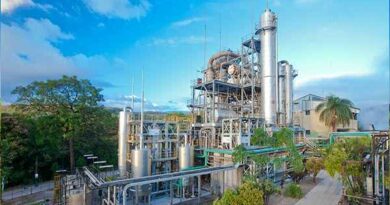IISc engineers catalyst to extract biofuels from fatty acids
The IISc researchers have created an enzymatic platform that transforms abundant and inexpensive fatty acids into valuable hydrocarbons known as 1-alkenes.

India’s quest for sustainable energy is gaining momentum. Researchers at the Indian Institute of Science (IISc) have developed a biocatalyst that efficiently converts fatty acids into promising biofuels. Using living systems or their parts to accelerate chemical reactions, the IISc team has achieved a significant breakthrough.
IISc states that this innovation could revolutionize the production of “drop-in” biofuels, which are compatible with existing fuel infrastructure. Led by Assistant Professor Debasis Das from the Department of Inorganic and Physical Chemistry (IPC), the team has created an enzymatic platform that transforms abundant and inexpensive fatty acids into valuable hydrocarbons known as 1-alkenes. These new compounds show great potential as sustainable alternatives to fossil fuels and are widely used in the polymer, detergent, and lubricant industries.
In a previous study, the IISc team purified and characterized an enzyme called “UndB,” found in the membranes of living cells, particularly certain bacteria. UndB is notable for its rapid conversion of fatty acids to 1-alkenes. However, a significant challenge was the enzyme’s quick inactivation due to a byproduct of the reaction. To address this, the researchers combined UndB with another enzyme, catalase, creating a fusion protein that dramatically enhanced the process’s efficiency.
In the current study published in Science Advances, the team added catalase to the reaction mix. According to team member Tabish Iqbal, catalase degrades the hydrogen peroxide (H2O2) produced during the reaction. This addition increased the enzyme’s activity 19-fold, from 14 to 265 turnovers (turnovers indicate the number of active cycles an enzyme completes before becoming inactive).
The team’s engineered E. coli bacteria, acting as a “whole cell biocatalyst,” can now efficiently produce these valuable hydrocarbons. This breakthrough not only addresses the growing need for sustainable fuel alternatives but also opens up possibilities for producing other important chemicals like styrene.




